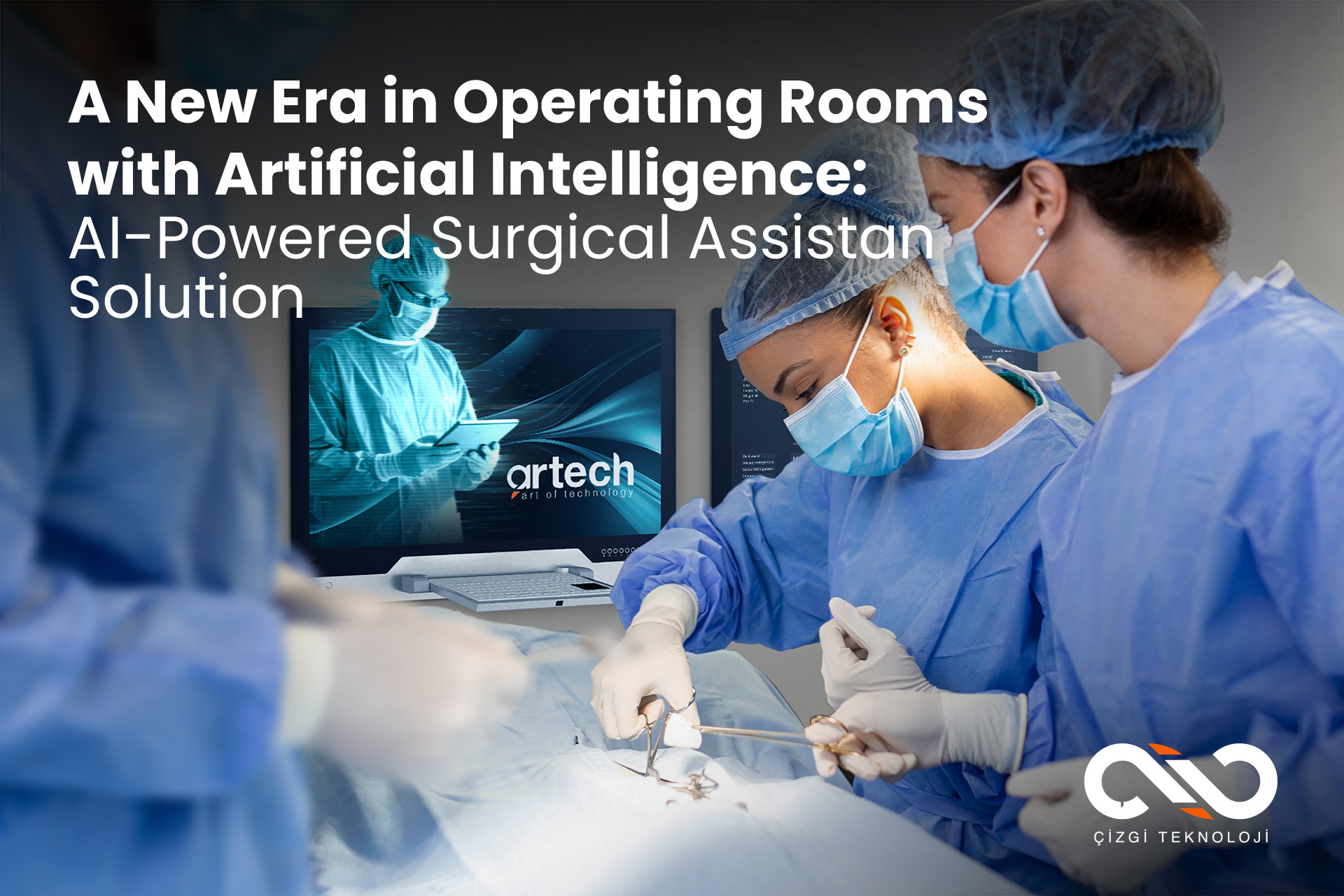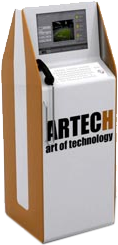A New Era in Operating Rooms with Artificial Intelligence- AI-Powered Surgical Assistant Solution

Digitalization in healthcare technologies is accelerating, and operating rooms have become the most critical stage of this transformation. Surgeons’ needs for rapid decision-making, error-free documentation, and safe process management are more important than ever. However, traditional methods cannot fully meet these needs, and the demand for next-generation solutions is increasing day by day.
In this context, Çizgi Teknoloji’s AI-powered surgical assistant solution aims to transform the way both surgeons and healthcare institutions work by integrating artificial intelligence into operating room workflows.
Challenges in Surgical Workflows
One of the long-standing core problems in operating rooms is manual documentation. Recording data by hand during or after the procedure leads to time loss and increases the risk of errors. At the same time, surgeons are expected to make rapid decisions at critical moments, often without systematic and contextual support from their digital systems.
Another major challenge is the lack of integration. Gaps between surgical devices, HIS, PACS, or EHR systems make information flow difficult and render pre- and post-operative processes inefficient. In addition, many existing solutions are tightly bound to language and procedure, limiting their adaptability to different specialties and multinational teams.
The methods used up to now have failed to fill this gap. Manual reporting is still heavily used, voice command systems are generally limited to basic device control, and video recordings often remain passive archives. What surgeons truly need is real-time support, automated reporting, and contextual awareness.
The New AI-Powered Solution
Çizgi Teknoloji’s AI-powered surgical assistant solution was developed by teams specialized in medical technology, artificial intelligence, and surgery, working closely with surgeons.
Multiple AI technologies work together within the system:
- Speech Models transcribe conversations in the operating room using appropriate medical terminology.
- Vision Models analyze camera feeds to detect critical moments.
- Large Language Models (LLMs) process information derived from audio and video to accelerate reporting and summarization.
In this way, the system does not make decisions in place of the surgeon, but instead assumes the role of a reliable digital assistant working alongside them.
Data and Model Training
At the core of the model’s success lies the reliability of the data sources used. Audio data was collected from trusted medical content and meticulously cleaned, while text data was compiled from textbooks and academic articles. For visual data, both validated academic sources and synthetic data generation were utilized.
Training large-scale models took up to 15 days, while smaller models were trained within a few days. Model performance was evaluated using TUS exam-style questions, which are highly specific to medical terminology. As a result, the AI system was equipped not only with theoretical knowledge but also with a strong grasp of surgical contexts.
Technical Challenges and Solutions
Developing a system capable of operating in real time brought with it numerous technical challenges. Noisy audio data was cleaned using advanced algorithms, and retraining was performed to ensure better alignment with medical terminology. The “hallucination” issue observed in large language models was minimized through carefully designed prompts.
The system was further optimized with GPU/CPU optimizations, model compression, and pipeline improvements to ensure high-speed performance. On the data security side, compliance with GDPR and HIPAA was achieved, and special algorithms were developed to anonymize patient data.
Pilot Studies and Integration Plans
Although no official pilot implementation has begun yet, the infrastructure is largely ready. Clinical tests are planned to start soon within the scope of a collaboration with Akdeniz University Hospital.
The system will be able to integrate via APIs with surgical workflow management systems, process data from cameras and audio devices in real time, and generate reports in harmony with hospital information systems. Thanks to this integration, it will be able to operate in operating rooms as a trusted digital assistant standing by the surgeon’s side.
Added Value and Future Vision
The AI-powered surgical assistant solution is not just a technical innovation; it is also a step towards a fundamental transformation in surgical workflows. It:
- Reduces documentation time, increasing operational efficiency.
- Decreases error rates through real-time alerts.
- Enhances patient safety through more accurate and faster processes.
- Offers suitability for international use with its multilingual infrastructure.
- Extracts meaningful insights from surgical data, contributing to academic research.
Over the next few years, the goal is for the system to be adopted widely in university hospitals, private healthcare groups, and surgical centers, and to be expanded with models tailored to different surgical specialties. Full integration with HIS, PACS, and robotic surgery platforms is also part of this vision.
Sustainable Impact
This solution is expected to generate sustainable impact in economic, social, and environmental dimensions. Increased operational efficiency will lower costs, while reduced error rates will prevent re-operation expenses. Patient safety and healthcare workers’ job satisfaction are expected to rise. At the same time, paperless reporting processes will yield environmental benefits.
Çizgi Teknoloji aims to establish a presence not only in Turkey but also in markets with strong regulatory frameworks such as Europe, the Middle East, and North America. With its multilingual structure and GDPR/HIPAA-compliant architecture, the company is taking solid steps toward making this vision a global reality.
Conclusion
Çizgi Teknoloji’s AI-powered surgical assistant solution is designed to make operating rooms safer, faster, and more efficient. This technology not only reduces surgeons’ workload but also positions itself as one of the pioneers of AI-driven transformation in the healthcare sector.



 English
English
 TR
TR